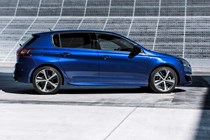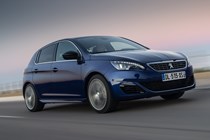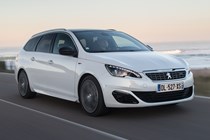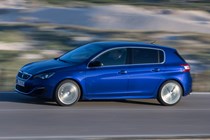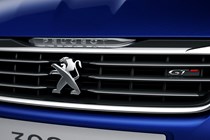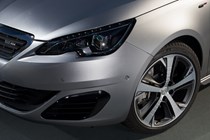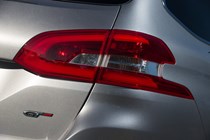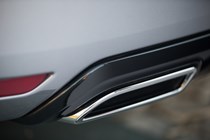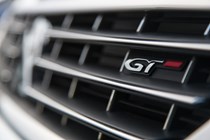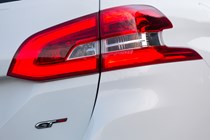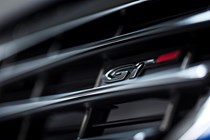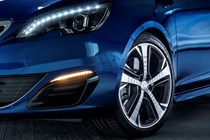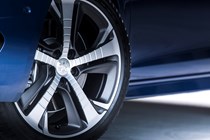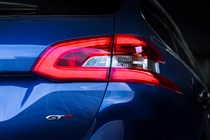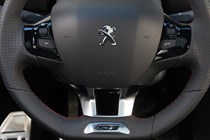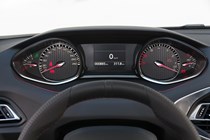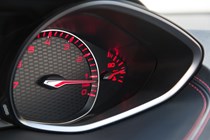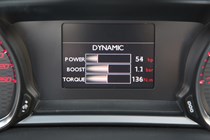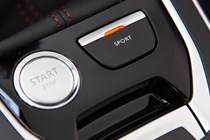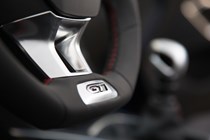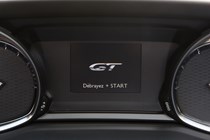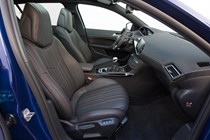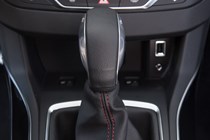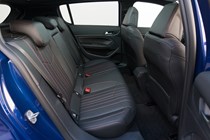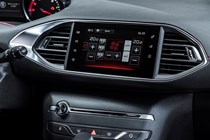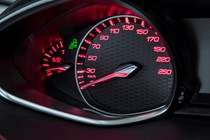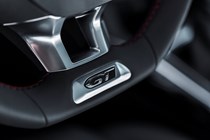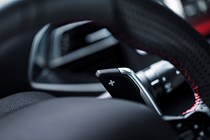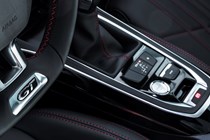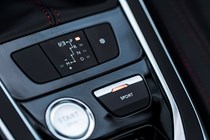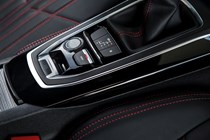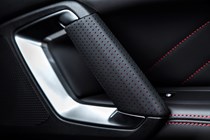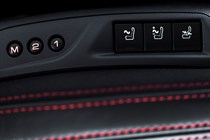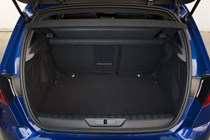
Peugeot 308 GT review
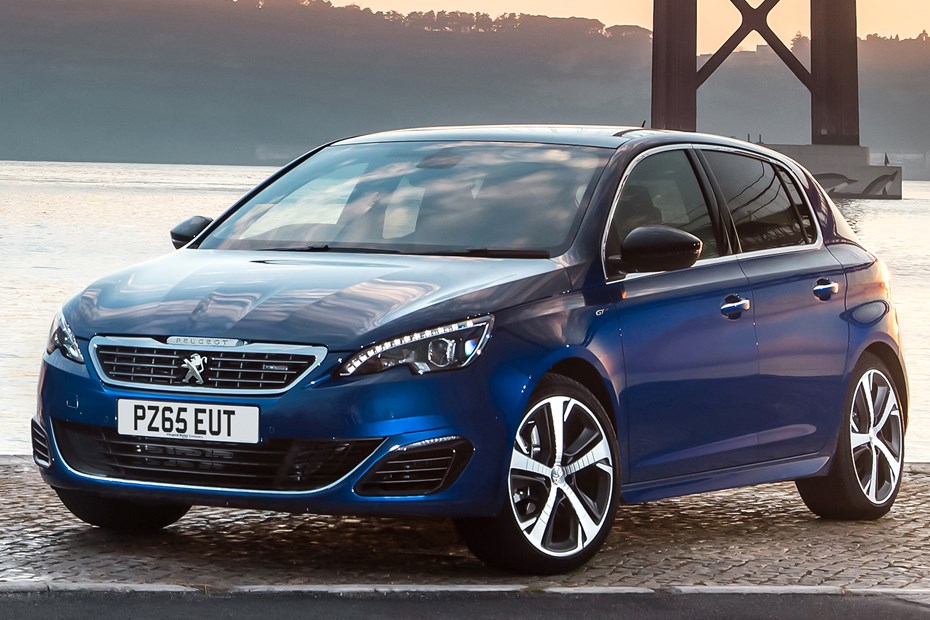
At a glance
| Price new | £25,475 - £27,325 |
|---|---|
| Used prices | £3,850 - £9,389 |
| Road tax cost | £20 - £190 |
| Insurance group | 26 - 28 |
Get an insurance quote with

|
|
| Fuel economy | Not tested to latest standards |
| Range | 583 - 816 miles |
| View full specs for a specific version | |
Available fuel types
Petrol
Diesel
Pros & cons
- Excellent petrol engine
- Looks great
- Loaded with kit
- Has hot hatch potential
- Seriously comfortable
- We prefer regular 308
- Handling disconcerting at speed
- Diesel doesn’t make sense
Peugeot 308 GT (15-17) rivals
Overview
It’s been a while coming, but finally here’s a hotter version of a car we’re very fond of: meet the Peugeot 308 GT.
On paper, the changes here look set to bring the 308 – 2014’s European Car of the Year – up to ‘warm hatch’ (or indeed SW estate) status. By that we mean it won’t be a hard-edged performance car of Renaultsport Megane or Astra VXR ilk, but rather something slightly softer like the Kia Ceed GT or SEAT Leon in FR trim.
Hot or not?
And upon driving it, we’re able to confirm that ‘hot’ it most certainly isn’t. There are some very appealing aspects – such as the looks, level of standard kit and how comfortable it is – along with some less-impressive attributes. We found the handling left us wanting, and the diesel version doesn’t seem to make much sense at all.
That said, as a statement of intention there’s every indication we’re dealing with a lot of potential here. It’s a car that feels like a decent chassis set-up and powerful engine away from being a truly great hot hatch, so here’s hoping the rumoured 308 R (tweaked by the Peugeotsport race team behind the excellent RCZ-R) appears soon and confirms our suspicions.
Looking the part
Peugeot has tweaked the aesthetics of the 308 to reflect its sportier demeanour and for that reason it gets a drop in ride height (7mm at the front and 10mm at the rear) along with a set of 18-inch alloy wheels. The suspension is also stiffer and a set of high-performance tyres and bigger brakes are fitted to get the most from the car’s chassis improvements.
The bespoke body styling doesn’t stop there, with a redesigned front grille flanked by a pair of top-spec LED headlights and some clever new indicators which move from the inside to the outside of the car.
At the rear you get a pair of exhaust pipes – though don’t be fooled, they’re not functional, the real exhausts are small and point downwards under the car – and a gloss black lower rear bumper, while a special paint called Magnetic Blue is exclusively on offer for GT and GT Line customers.
Red stitching and aluminium detailing reminds the occupant they’re driving something more special than a conventional 308, and the ‘i-Cockpit’ seen in all 308s gets special programming to reflect the car’s sporty nature.
The final piece of the puzzle is a perforated leather steering wheel with GT badging.
Driver Sport Pack
Each 308 GT is fitted with the Driver Sport Pack, which includes a range of features to further accentuate the car’s sporty pretensions.
For example, the engine noise is amplified in the cabin by the speakers (more on that later), and the instrument display is illuminated in red. Parameters such as power, torque and accelerative figures are displayed on the instrument panel, while engine and steering performance has been sharpened for sportier driving.
This pack can be ‘disabled’ too, for times when a more comfortable set-up is more suitable.
Pair of engines and gearboxes
There’s a choice of two engines for the GT. Our pick is the 1.6-litre petrol attached to a six-speed manual gearbox. Dubbed ‘GT 205’, it boasts a 0-62mph sprint in 7.5 seconds while emitting 130g/km of CO2 and returning a claimed 50.4mpg. This engine isn’t available in the SW estate version or with an automatic gearbox, though.
A diesel model is available too, called the GT 180. As the name suggests, this one gets closer to 180bhp but also gets 400Nm of torque so accelerates fairly quickly. It’s coupled exclusively to Peugeot’s new ‘EAT6’ six-speed automatic gearbox. While it’s a fair bit more efficient than the petrol, we’d avoid this one. To find out why, check the Performance and Handling sections of this review.
There’s some extremely strong competition for this car, so it’s got quite a battle on its hands. To find out what’s in its arsenal, read on for the comprehensive Peugeot 308 GT review.







